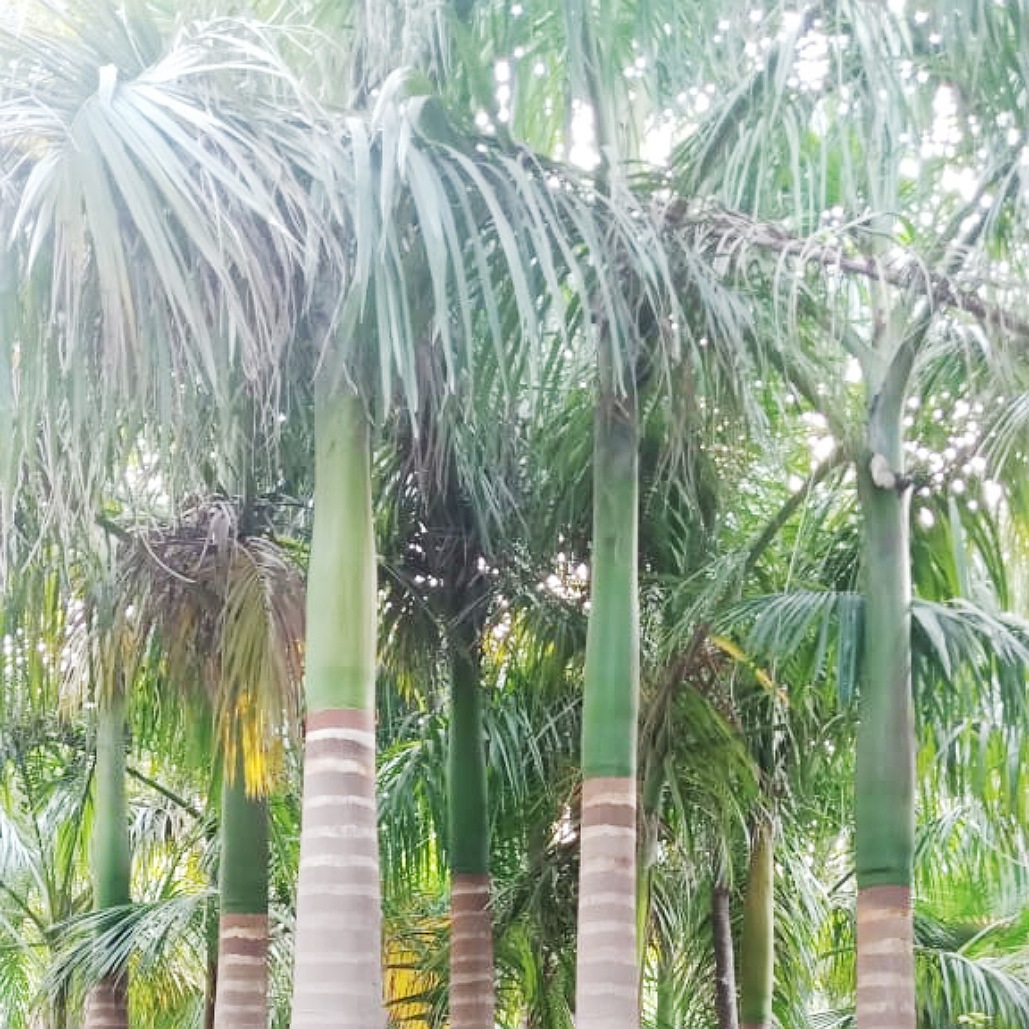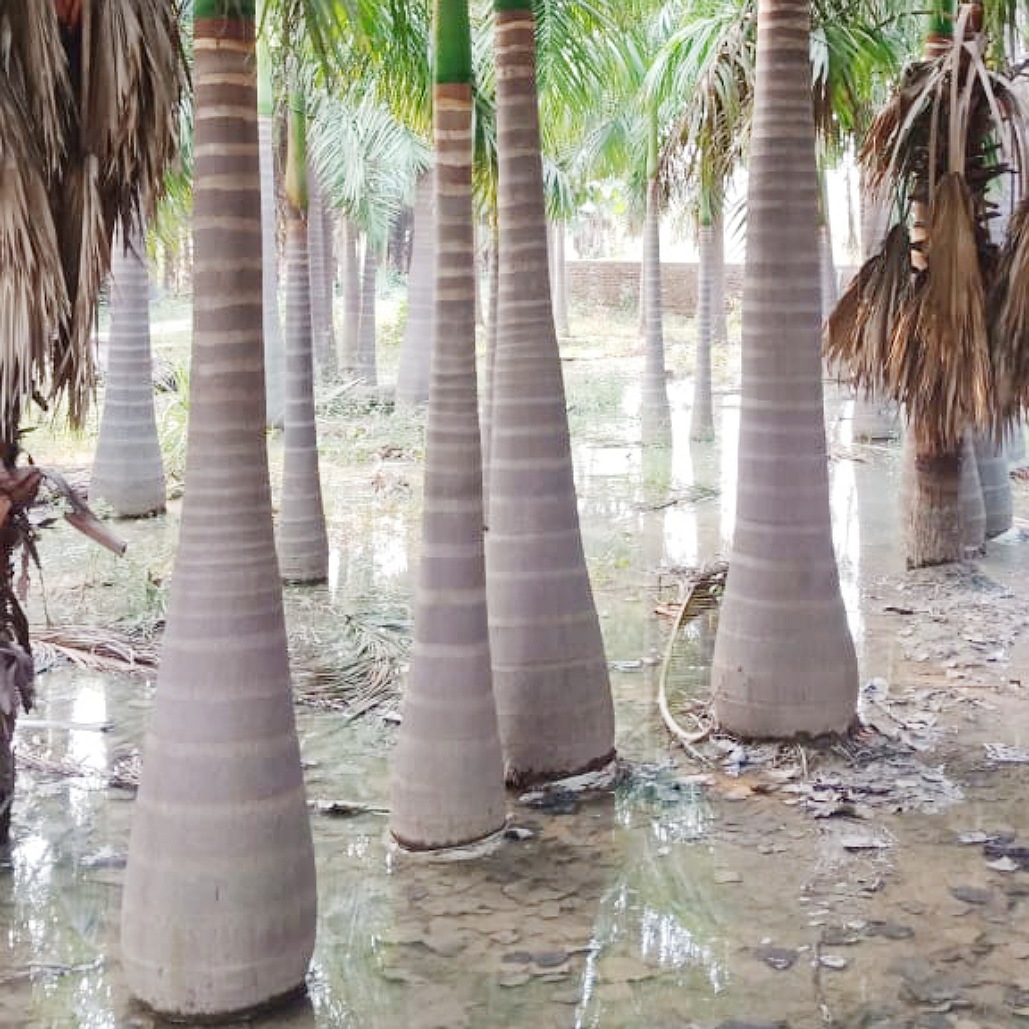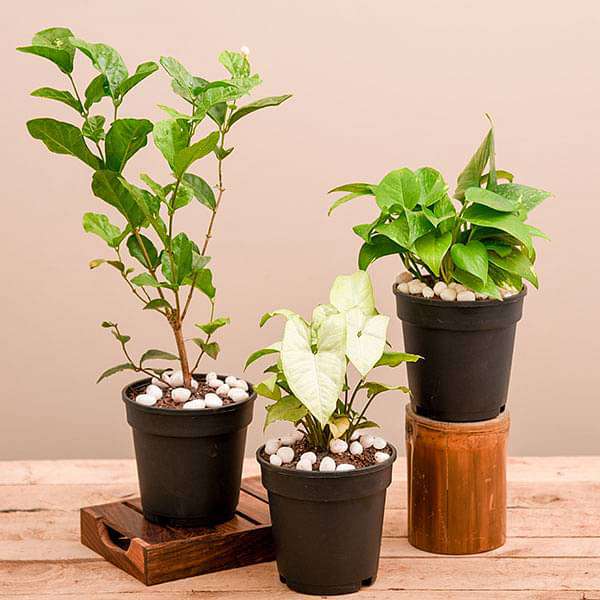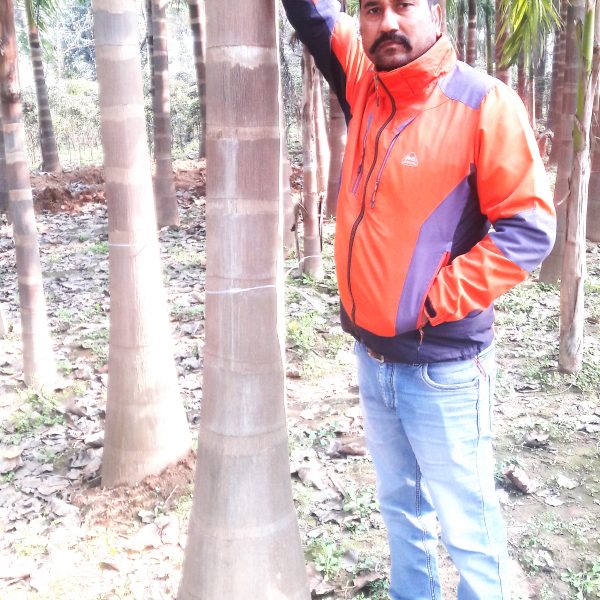Roystonea regia is a large palm which reaches a height of 20–30 metres (66–98 ft) tall,[6] (with heights up to 34.5 m (113 ft) reported)[7] and a stem diameter of about 47 centimetres (19 in).[6] (K. F. Connor reports a maximum stem diameter of 61 cm (24 in).)[7] The trunk is stout, very smooth and grey-white in colour with a characteristic bulge below a distinctive green crownshaft.[8] Trees have about 15 leaves which can be up to 4 m (13 ft) long.[6] The flowers are white with pinkish anthers.[8] The fruit are spheroid to ellipsoid in shape, 8.9–15 millimetres (0.35–0.59 in) long and 7–10.9 mm (0.28–0.43 in) wide.[6] They are green when immature, turning red and eventually purplish-black as they mature.[8]
Root nodules containing Rhizobium bacteria have been found on R. regia trees in India. The presence of rhizobia-containing root nodules is usually associated with nitrogen fixation in legumes; this was the first record of root nodules in a monocotyledonous tree.[9] Further evidence of nitrogen fixation was provided by the presence of nitrogenase (an enzyme used in nitrogen fixation) and leghaemoglobin, a compound which allows nitrogenase to function by reducing the oxygen concentration in the root nodule.[9] In addition to evidence of nitrogen fixation, the nodules were also found to be producing indole acetic acid, an important plant hormone.







Reviews
There are no reviews yet.